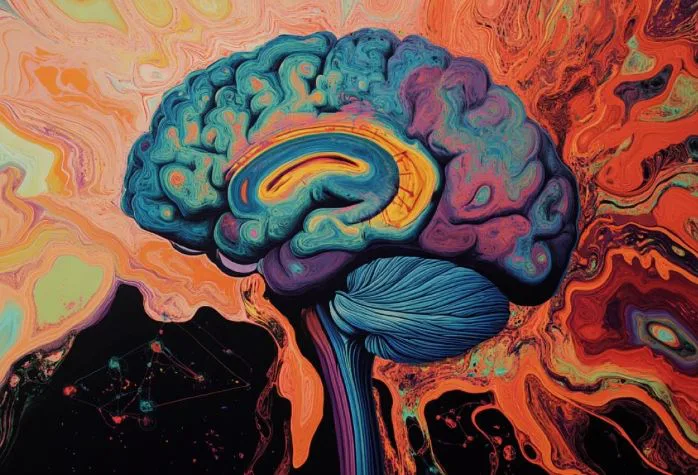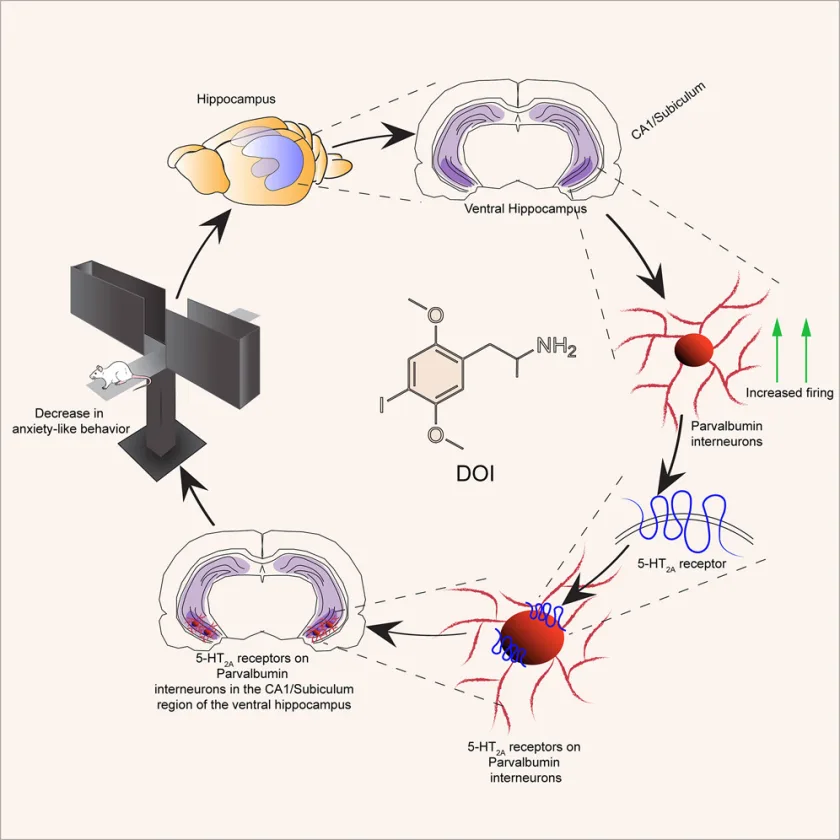
When I first read “DMT: The Spirit Molecule” by Dr. Rick Strassman, I thought developing psychedelic inspired drugs without any “hallucinating” side-effects to cure anxiety related problems could be a game changer. Interestingly, I came across research by Cornell University, where researchers did come up with psychedelics to excite cells in hippocampus to reduce anxiety.
The study by Cornell and the Tata Institute of Fundamental Research in India, showed that the psychedelic DOI (2,5-dimethoxy-4-iodoamphetamine) can reduce anxiety in mice and rats. The effect of DOI is like LSD, psilocybin and mescalin, that is to numb a specific neuron which can directly reduce anxiety.
According to the research, the psychedelic DOI activates the ventral hippocampus. This triggers the fast-spiking interneurons, which are present in ventral hippocampus (vHpc). These interneurons are a type of GABAergic interneurons, and are responsible for critical vHpc processes, such as emotional regulation, managing stress and memory processing.
The ventral hippocampus (vHpc) is located in the inner region of the brain’s temporal lobe. Hence, it is involved in various mental health conditions and in how we respond to stress.
DOI works through 5-HT2A Receptors
Researchers discovered that these GABAergic interneurons, more specifically, those marked by a protein called parvalbumin (PV), have receptors (5-HT2A). When the drug (DOI) is induced, these receptors get activated. Once they become more active, they assist in easing anxiety.
Usually, the psychedelic drug DOI causes hallucinations but, in this case, the team did not encounter such an effect. As per Dr. Vidita Vaidya, senior professor of biological sciences at the Tata Institute of Fundamental Research in Mumbai, along with first author, Praachi Tiwari, a postdoctoral research fellow at Johns Hopkins University, the finding suggests that some of the therapeutic effects of psychedelics may be limited to specific brain circuits.

Rats and Mice in an Anxiety-Specific Maze
For the study, the team observed rats and mice in a maze specifically designed to study anxiety. How? The maze had two compartments:
- one was enclosed with walls, which gave the rodents a feel of safety, while
- the second area was totally exposed and slightly elevated, thus creating a sense of vulnerability
Anxiety levels were traced based on time spent in each section.
The Results
In one experiment, DOI was injected into the bloodstream before testing the rodents in the anxiety maze. Followed by targeted DOI Infusion, in four different brain areas. It was done one at a time to test for anxiety reduction.
Interestingly, only the ventral hippocampus retained the effect of reducing anxiety when infused with DOI, reported Alex Kwan, associate professor of biomedical engineering at Cornell Engineering.
Antonio Fernandez-Ruiz, assistant professor of neurobiology and behavior measured electrical brain activity during the experiments. The recordings identified an increased firing of interneurons. These interneurons, which make up 10%-15% of cells, silenced other neurons to prevent overexcitation. In simple words, this increase in activity is responsible for reducing the rodent’s anxiety, making them feel more relaxed.
Researchers envision that in the coming future, they would like to investigate how the amygdala may be involved.
Takeaway
The study has tonnes of future prospects. Primarily, it can assist in developing targeted treatments for anxiety disorders. Once, the understanding of ventral hippocampus in relation to the anxiety-reducing effects of psychedelics is established, researchers can develop targeted therapies more effectively.
Secondly, the study also offers a pathway for more in-depth analysis into other mental health conditions. After all, the research highlights that specific brain circuits are involved in anxiety and emotional regulation.
Source: Cornell Chronicle



